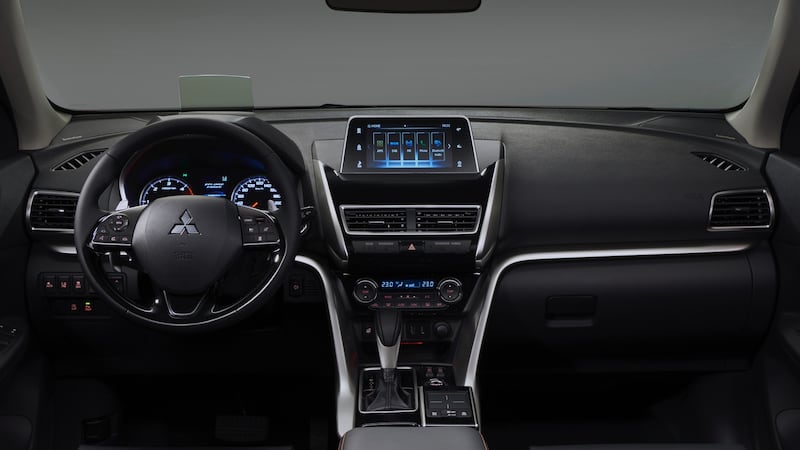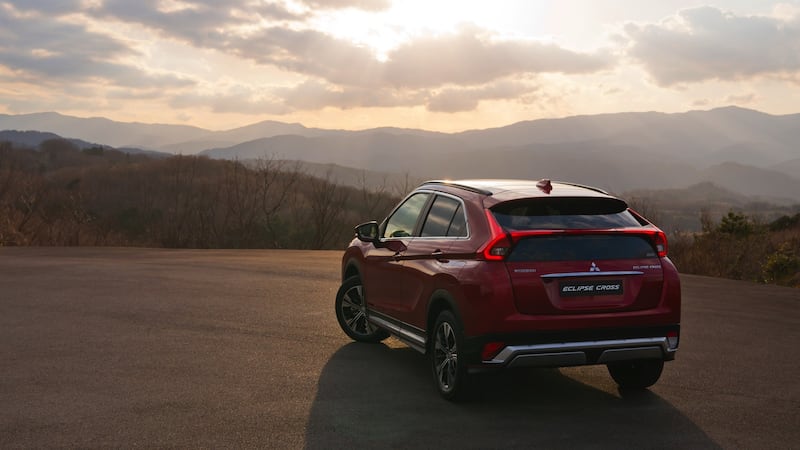Sometimes, when a carmaker is in crisis, it can find an unexpected slice of inspiration. Think back to the times when other carmakers have been on the brink of collapse, and yet pulled an absolute star car out of seemingly nowhere. MG Rover had but a couple of years left to live when it created the MG ZT saloon, one of the best cars in the long and torturous history of Rover-Austin-MG-British-Leyland etc. Saab, even in its death throes, came up with the last-generation of 9-5 saloon which, while not perfect, was certainly better than decent. And think how many wonderful cars crisis-prone Lancia gave us.
Mitsubishi was certainly in crisis when it created the Eclipse Cross. So savaged was the company's share price by the scandal over fudged fuel economy figures that rival Renault-Nissan was able to snap the company up cheap, suddenly and unexpectedly creating the world's biggest carmaker (by volume of production, if you don't include heavy trucks). It's odd that while German carmakers were busy poisoning monkeys, and largely getting away with it, Mitsubishi lied about some small car economy numbers and got slammed . . .
Were its engineers able, at this time of crisis, to dig deep and produce something great? Sadly, no. The Eclipse Cross (which has drawn much ire in the US for apparently besmirching the name of the beloved old Eclipse coupe) is rather more what you’d expect from a company operating in circumstances of turmoil. It’s a bit of a mish-mash, with some good points but far too much in the debit column for comfort.
While Renault-Nissan swept in and took Mitsubishi under its corporate wing, the work on the Eclipse was started long before, and so there's no commonality between it and what are now its sister mid-size SUVs, the Nissan Qashqai and Renault Kadjar. Instead, it's based on the cut-down platform taken from the Outlander, which should be a good thing as that's far from being a poor car. Indeed, the Eclipse will eventually take some of the Outlander's marketplace, as the next-generation model will grow in size, and the next ASX will shrink a bit, creating a more logical three-tier Mitsubishi crossover line-up. It's mostly good looking – sharp and hawk-faced at the front, but a bit blocky and over-styled around the back.
Smooth and punchy
The only engine option for now is a new 1.5-litre turbo petrol, developing a better-than-healthy 163hp and 250Nm of torque, and you’d think that would get the Eclipse off to a good start. Sadly, it doesn’t. I’m pretty sure there’s a good engine in there somewhere – it has moments where it’s both smooth and punchy, and fuel consumption overall isn’t too shabby – but the way you access the engine creates serious issues. It’s mostly down to the throttle response, which is so variable as to be schizophrenic.

Sometimes, the lightest brush of your foot on the throttle pedal elicits a sudden surge of revs, and a learner-driver style kangaroo hop up the road. At other times, even a sturdy shove on the loud pedal gets you nothing more than a turgid response, and you creep and strain up the road, waiting for the revs and the turbo to catch up. It’s not like conventional turbo lag, so I’m pretty well convinced it’s more like engine management lag. Whatever is causing the issues, it’s staggeringly annoying and makes the Eclipse all-but impossible to drive smoothly around town.
The ride quality doesn’t help, as it’s really very firmly sprung and definitely doesn’t like urban scars and lumps. I’m not averse to a car being stiffly sprung, and in fairness the Mitsubishi’s suspension is well controlled even if it is firm, but the big downside is that this stiffness means that the cabin vibrates constantly around town, kicking off a sudden cacophony of squeaks, rattles, and sundry other noises. It’s incredibly annoying.
On the open road, the Eclipse is a little better, but only a little. There’s no joy to be had from the lifeless steering, but if you carefully modulate your cornering inputs, there’s a decent balance to be found in there somewhere. It certainly rarely misbehaves, but there is a surfeit of road and tyre noise, so longer journeys are something of a trial.

The cabin’s not bad. Certainly it’s a step up from previous Mitsubishi efforts, with a distinct improvement in terms of material quality, and fit and finish. The front seats are hugely comfy, and the new touchscreen looks good, sticking up proud of the dash. It includes Apple CarPlay and Android Auto, which is just as well as the home-grown menu layout is rather confusing and a bit fiddly, not helped by the curious choice of a Lexus-style trackpad controller.
Disappointing boot
Rear seats space is decent, and adjustable both with a reclining backrest and a fore-aft sliding mechanism, but the boot is a touch disappointing – 411 litres with the seats fully back is barely more than what you get in a Seat Arona. There's also an issue with rear visibility. The Eclipse gets one of those split rear screens, but the lower half becomes immediately covered in road grime, and the rear wiper only deals with a shallow sweep of the top half. Just as well there's a rear-view camera.
Speaking of which, basic spec includes the big screen with phone connectivity, DAB radio, Bluetooth, auto air conditioning, privacy glass, and a full suite of safety equipment including forward collision alert, lane departure warning, and LED daytime lights. Our Instyle-spec car came with heated seats (powered adjustment on the driver’s side too), leather upholstery, twin sunroofs, and a Rockford-Fosgate upgraded audio system (no, usb neither but apparently it means something to audio-philes). Base prices start from a reasonable €27,900 but ours was specced up to €34,900 which seems a touch steep.
The thing is, Mitsubishi’s certainly capable of automotive greatness, and if anyone disagrees then just point them towards a Lancer EvoVI, Galant VR4, various Pajeros, and the Outlander PHEV. This though? A car created in a moment of crisis. Hopefully, the calming support of Renault and Nissan will mean better things for Mitsubishi in the future.
The lowdown: Mitsubishi Eclipse Cross.
Price: €34,900 as tested. Eclipse Cross range starts from €27,900.
Power: 163hp.
Torque: 250Nm.
0-100km/h: 10.3sec.
Top speed: 205km/h.
Claimed economy: 42.8mpg (6.6 litres/100km).
CO2 emissions: 151g/km.
Motor tax: €390.
Verdict: Good looking but underdeveloped underneath and less than satisfying to drive.
Our rating: 2/5











